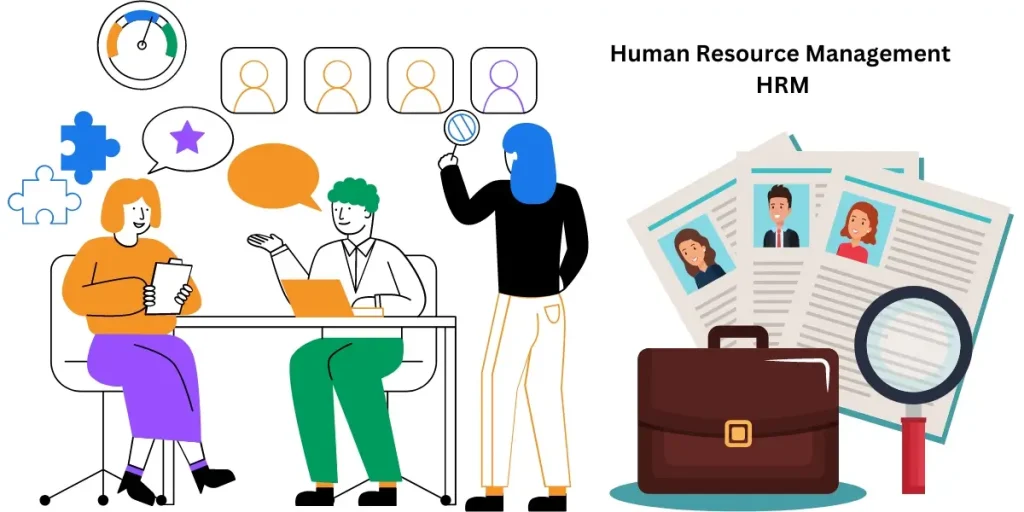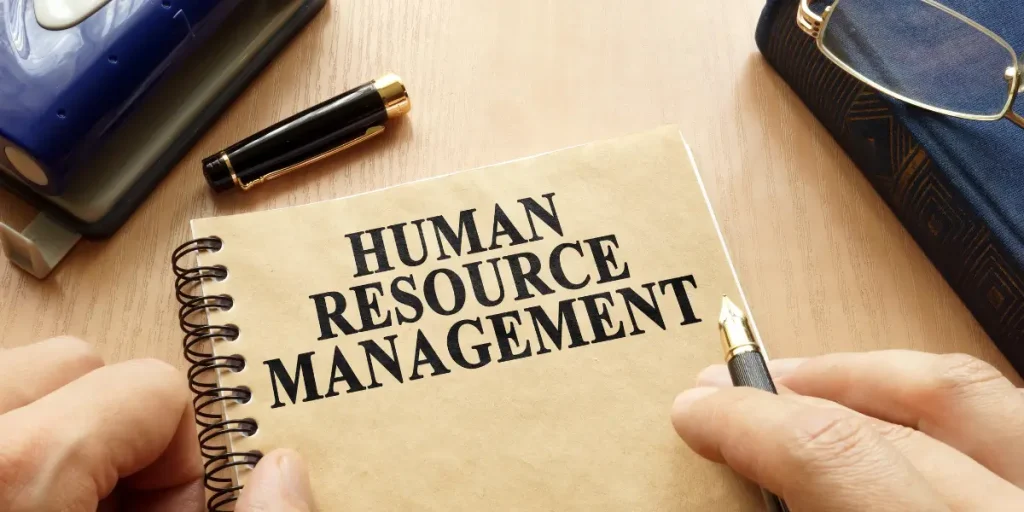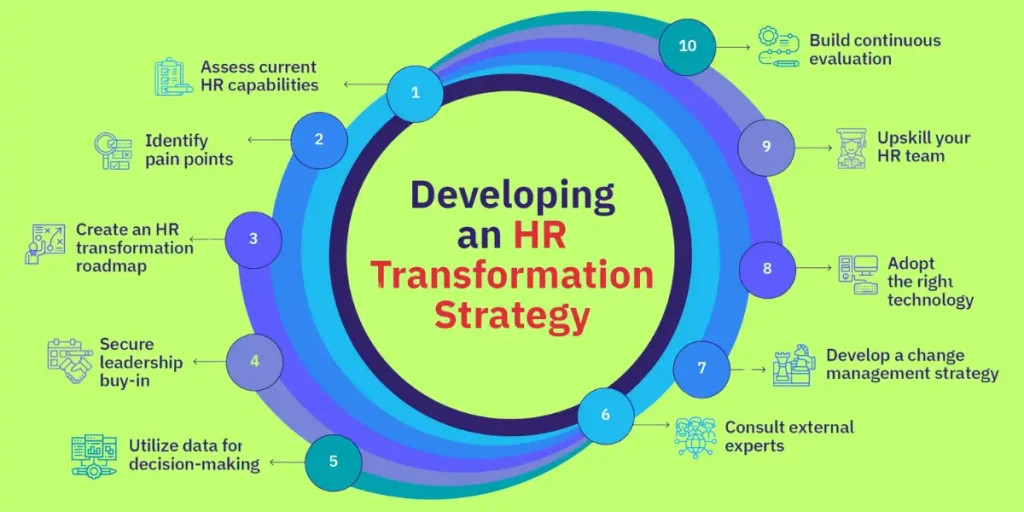Human Resource Management (HRM) Strategies for Organizational Success 2025

It’s often said that people are an organization’s greatest resource. However, until recently, Human Resource Management (HRM) was often overlooked compared to other business operations like marketing, finance, and sales. However with advancements in technology, the rise of global markets, and organizational restructuring, HRM has become a critical pillar of organizational success.
Today, business leaders recognize that hiring the right people and ensuring they remain engaged and productive is fundamental to achieving business goals. This post explores the role and importance of HRM, its key functions, and how businesses can leverage HRM tools to drive success.
What is Human Resource Management?
Human Resource Management is the strategic approach to managing an organization’s workforce. It involves creating policies and procedures that support business objectives and strategic plans while fostering a work culture that promotes core values and employee productivity.
At its core, HRM aims to maximize the performance of employees by ensuring that they are well-aligned with the company’s goals. This involves everything from recruitment and selection to training, development, and employee retention.
Key Functions of Human Resource Management
The functions of HRM can vary depending on the industry, business size, and types of workers employed. However, certain fundamental HRM functions remain consistent across most organizations. These functions help businesses acquire, manage, and retain talent while ensuring that employees remain motivated and productive.
Here are some of the key functions of Human Resource Management:
Job Analysis and Design
Job analysis involves determining the specific skills, knowledge, and experience necessary to perform a job successfully. This process helps businesses to:
- Hire the right people who fit the role
- Design appropriate compensation packages
- Develop relevant training programs to foster skill development
By conducting a thorough job analysis, HR professionals can define clear job responsibilities, thus setting employees up for success from day one.
Recruitment and Selection
One of the most important roles of HRM is finding and selecting the right talent. HR teams need to identify the needs of the organization and actively seek out qualified candidates. This process includes:
- Writing job descriptions
- Conducting interviews
- Assessing candidates’ suitability
- Negotiating compensation packages
Effective recruitment ensures that companies are equipped with the right talent to drive business growth.
Performance Management
Performance management involves the ongoing process of evaluating employee performance. HR managers use performance reviews to provide constructive feedback, helping employees to grow and improve. Additionally, performance management allows organizations to:
- Identify high performers and reward them with promotions or raises
- Address areas where employees need improvement
- Align individual goals with overall business objectives
By maintaining an effective performance management system, businesses can ensure that employees remain engaged and aligned with the company’s mission.
Training and Development
For businesses to remain competitive, their workforce must continue to learn and grow. HR departments are responsible for creating training and development programs that improve employees’ skills and prepare them for future roles. Common types of training include:
- Onboarding programs for new hires
- Leadership training for employees with the potential for promotion
- Skills development for new technologies or processes
Investing in employee development helps reduce turnover, enhance job satisfaction, and improve organizational productivity.

Compensation and Benefits
Providing competitive compensation and benefits packages is key to attracting and retaining top talent. HR professionals are tasked with creating fair pay systems that align with industry standards, as well as developing benefits programs such as:
- Health insurance
- Retirement plans
- Performance-based incentives
By ensuring that compensation meets both employee expectations and company budget, HRM plays a vital role in maintaining a motivated workforce.
Employee Relations
Maintaining positive relationships between employees and management is another critical function of HRM. This includes resolving conflicts, addressing grievances, and fostering an inclusive work environment. HR professionals work to:
- Promote open communication between employees and management
- Ensure that workplace policies are enforced fairly
- Create a positive work environment that encourages collaboration and teamwork
Good employee relations lead to higher job satisfaction, which ultimately improves productivity and reduces turnover.
Compliance with Laws and Regulations
Human resources must ensure that the organization complies with labor laws and regulations, including those related to:
- Discrimination and equal opportunity
- Workplace safety and health regulations
- Wage and hour laws
By keeping up with evolving legal requirements, HRM helps to safeguard the company from costly fines and legal disputes.
The Responsibilities of HRM
Beyond day-to-day administrative duties, HR professionals have broader responsibilities that shape the overall culture and success of the organization. These include:
- Staffing: Determining how many employees are needed, recruiting suitable candidates, and ensuring that new hires fit the company’s long-term goals.
- Developing workplace policies: Drafting and enforcing policies that promote fairness, safety, and productivity in the workplace.
- Administering pay and benefits: Setting up compensation structures that are competitive and equitable, while managing employee benefits packages.
- Talent retention: Creating initiatives to ensure employees are satisfied and motivated to stay with the company for the long term.

HRM in Small Businesses
For small businesses, the role of HRM becomes even more crucial. In small organizations, every employee’s contribution has a significant impact on the overall success of the company. Therefore, small business owners must take a proactive approach to human resource management. Key steps include:
- Assessing current operations to determine the need for new hires or more effective use of existing employees.
- Involving management in the recruitment process to ensure alignment with business goals.
- Creating a clear employee handbook that outlines company policies and expectations.
- Offering training and development opportunities to enhance employee skills and productivity.
Small businesses that prioritize effective HRM practices are more likely to maintain a cohesive, engaged workforce that contributes to long-term success.
Leveraging Technology in HRM: Human Resource Management (HRM) Systems and Software
With increasing workforce complexity and rapidly evolving regulations, HR professionals are turning to HRM software solutions to streamline their processes and maintain compliance. These systems automate administrative tasks, freeing up HR professionals to focus on strategic initiatives such as talent development and employee engagement.
Types of Human Resource Management (HRM) Software
There are several types of HRM software available to businesses today, each offering different functionalities:
- Human Resource Information Systems (HRIS): These systems handle basic HR tasks such as payroll, applicant tracking, and benefits administration.
- Human Resource Management Systems (HRMS): In addition to the functions of an HRIS, HRMS solutions provide talent management capabilities, including performance reviews and employee development programs.
- Human Capital Management (HCM) Solutions: These offer a more comprehensive approach, including global payroll, compliance support, and advanced analytics to guide strategic decision-making.
Benefits of Using Human Resource Management (HRM) Software

Implementing the right HRM system can offer numerous benefits to organizations, including:
- Streamlining administrative tasks to save time and reduce errors
- Improving employee engagement through better communication and self-service tools
- Ensuring compliance with legal regulations
- Providing data-driven insights for strategic decision-making
Conclusion
In today’s competitive business environment, Human Resource Management (HRM) plays a crucial role in driving organizational success. From recruiting top talent to fostering employee engagement and ensuring compliance with labor laws, HR professionals are instrumental in building a productive, satisfied workforce.
With the advent of HRM software, companies now have the tools to manage their workforce more efficiently, making HRM a critical component of any successful business strategy. Whether for a large enterprise or a small business, effective HR management is key to achieving long-term growth and sustainability.
By investing in HRM strategies and technologies, companies can create an environment where employees are empowered to succeed, leading to a thriving business.
FAQs
What is Human Resource Management (HRM)?
- HRM refers to the strategic approach to managing an organization’s most valuable assets – its employees. It involves recruiting, hiring, training, developing, and retaining talent, as well as managing employee relations, benefits, and compliance with labor laws.
What are the main functions of HRM?
- The main functions of HRM include recruitment and selection, employee training and development, performance management, compensation and benefits administration, employee relations, and ensuring legal compliance with employment laws.
How does HRM contribute to organizational success?
- HRM ensures that the right people are in the right roles, which improves productivity and employee satisfaction. Effective HRM practices lead to better performance, lower turnover, and a strong organizational culture, ultimately contributing to the company’s success.
What is the difference between HRM and traditional personnel management?
- HRM is a more comprehensive and strategic approach compared to traditional personnel management. While personnel management focuses on administrative tasks (e.g., payroll, compliance), HRM emphasizes long-term workforce planning, talent development, and aligning HR strategy with organizational goals.
How does HRM handle employee performance management?
- HRM handles performance management by setting clear goals, providing continuous feedback, conducting regular performance appraisals, identifying areas for improvement, and offering training or development opportunities to enhance employee skills and productivity.
Please feel free to contact us if you have any queries –
Call: +8801322303131 (WhatsApp)
Email: contact@avientech.com





